By Shako Liu
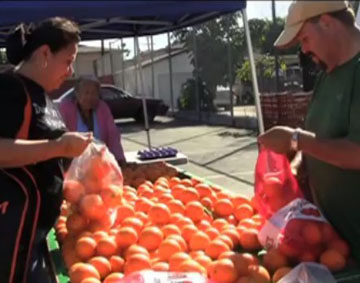
It was a chaotic Thursday afternoon, with 60 low-income residents coming to this little church, International House of Praise, in South Los Angeles to get food for the week. Everybody was exciting and eager to get food. Organizers had to shout on top of the noise to tell people where to sign up and line up. But few people were listening. Their attention was all drawn on the piles of fresh bread, cupcakes and vegetables on the benches.
Clothilde Beatoa, 81, doesn’t speak much English. She likes talking to people and often smiles with a mouthful of white teeth. “I need the food for me and my grandchildren,” she said.
She is not the only one who says that. The annul report of the U.S. Department of Agriculture shows 14.5 percent of American households are food insecure. The very low secure households have increased about 15 percent from the past three years. The California Health Interview Survey says there is a 30 percent increase of Californian adults who are struggling to feed themselves. Out of the 10 million population in L.A. County, 1.7 million are hungry. Gov. Jerry Brown’s new budget plan is going to cut $12.5 billion from spending, which will lead to a new limit of welfare service, and low-income residents are worrying about losing their food stamps.
Hunger Action LA, a nonprofit organization that is trying to raise awareness about hunger at government level, was protesting and fundraising at President Obama’s fundraiser in West Hollywood recently. Its executive director, Frank Tamborello, said, a $35,000 a plate inside could make17,000 meals for a hungry person in Los Angeles. He also pointed out the budget cut of Gov. Brown is going to impact 56,000 families.
“Gov. Brown’s proposal will cut of a lot of families off from this assistance after 24 months, even if they are working,” Tamborello said.
By this assistance, he means CalWORKS, the state’s welfare-to-work program, which is short for California Work Opportunity and Responsibility to Kids. CalWORKS is going to suffer nearly $1 billion slash if the proposal is passed.
“When families lose cash, they lose the ability to buy enough food, not to mention their ability to pay the rent,” Tamborello said.
He thinks the issue of hunger is also a problem of housing. A lot of people come to L.A. to pursue their American dreams, but the reality turns out the otherwise to many of them. L.A. is one of the most expensive housing cities in the country. People have to spend more than 50 percent of their income to pay the rent, especially seniors and disabled people.
Tamborello said, plenty of people are living on a pension, like social security or supplemental security income. They are living on between $800 and $850 a month, and paying 90 percent of that on rent, which leaves very little on their paychecks.
Particularly for a car city like L.A., many low-income people don’t have access to personal transportation. They don’t have a car to drive around and look for healthy food. Grocery stores in poor communities don’t provide as much fresh fruits and vegetables as they do in rich areas, Tamborello said, there is a drastic inequality in grocery stores.
He said Ralph’s told them there wasn’t much demand for healthy food in low-income communities. But he disagrees:“They are surrounded by fast food, which is pretty cheap and set at an affordable price for them.” He believes this is leading to some diarrated diseases, obesity and diabetes. There can even be obesity and hunger in the same person. “If you don’t eat enough, and what you eat are mostly things like potato chips, even though you are not getting a proper amount of nutrition, you are also going to be obese,” he said.
The worst case scenario he has seen was in the summer of 2008, when gas was $5 a gallon. He learned the story from a doctor, who received calls from social workers when they were visiting seniors living in mobile homes around Lancaster and Homedale. The social workers found some of the seniors pass out on the floors, because they couldn’t afford the gas to go into town and buy groceries.
Tamborello said a lot of the hunger is hidden inside the houses of seniors who don’t usually come out.
People who came to the food distribution in the South L.A. church were mostly seniors, homeless and disable people. Eugel Nicoleau, a volunteer in the church, used to be one of them. He recalled that he was laid off from his job and facing a painful divorce. Back in his hungry days, he would volunteer in different churches just to get all the supplies he needed but didn’t have. Now he managed to get his life back together, but still is volunteering for churches.
Nicoleau and other volunteers will go to the food bank every Monday with their 501c nonprofit paper to collect food, and hold the distribution gathering on Thursday. He enjoys what he does, even if sometimes he needs to confront difficult individuals.
“The biggest challenge is to deal with certain individuals that don’t understand. They are in a rush to get the food, and we have to really be patient at times,” he said.
He got into a big argument with a man who tried to cut the line when waiting to get food. He yelled at the man to maintain the order. But his anger disappeared immediately after the argument. It always makes him happy to see that people who come regularly stop coming any more, and tell him they are back on their feet.
“A lot of people wanna blame the president. It’s not the president, it’s really the economy,” he said.
His worst experience is to see people that he helps not appreciate the help and not happy. He said sometimes you have to overlook those who need more than they can offer.
Dandrea Cultepper, another volunteer in the church, was dancing and singing all the time when distributing the food. Even if the situation became out of control some time in the middle, she still loves this work.
“People who are calm like me and trying to have fun, but they will turn it into a hurricane,” she said.
Another way for low-income people to get healthy food is a farmers market. Tamborello and his volunteers usually come to a farmer market in South L.A. to sell vouchers every Wednesday. This farmer market targets on low-income families and communities. The voucher they sell is $1 each, and they will give one out for free.
Victor Garcia, a 19-year-old undocumented immigrant, is volunteering for Hunger Action L.A., because he got a ticket for crossing the street illegally. He said, many people want the vouchers for free.
“Individuals do have issues that they have to struggle with, but when you see 47 million Americans having to use the food stamp program, something tells you there is something wrong with the system,” Tamborello said.
He is going to take actions with other organizations and food banks on Hunger Action Day, which is May 17. They are not only going to distribute food, but also bringing people to Sacramento to talk with lawmakers and share experiences.
He said, “Poverty isn’t to anyone’s benefit. In the long run, the society will suffer from not having the participation of those people in the economy that we all need to share in.”









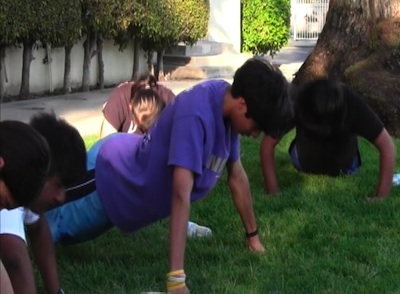 It’s 6:30 a.m. on a mid-March Saturday morning—not the usual time for students to be arriving to their high school campus. Yet one by one they come: some yawning, others munching on a hurried breakfast, all ready to run.
It’s 6:30 a.m. on a mid-March Saturday morning—not the usual time for students to be arriving to their high school campus. Yet one by one they come: some yawning, others munching on a hurried breakfast, all ready to run.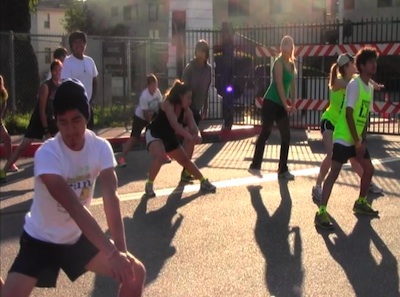 Foshay’s 10 student runners are part of a larger group of 3,000 students from 165 Southern California high schools, middle schools and community programs that train to run the marathon each year as a part of the Students Run L.A. (SRLA) program.
Foshay’s 10 student runners are part of a larger group of 3,000 students from 165 Southern California high schools, middle schools and community programs that train to run the marathon each year as a part of the Students Run L.A. (SRLA) program.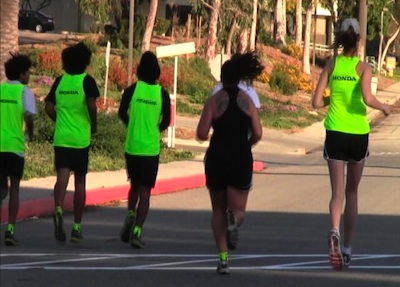 Less than 45 minutes after they set out from Veterans Park, the runners start to arrive at the designated meeting place, a grassy area overlooking the ocean near the Santa Monica Pier.
Less than 45 minutes after they set out from Veterans Park, the runners start to arrive at the designated meeting place, a grassy area overlooking the ocean near the Santa Monica Pier. The recently renovated and noticeably clean Baldwin Hills Crenshaw Plaza is downright bustling on a pleasant Thursday afternoon, and in architecture and vendor selection, looks almost indistinguishable from any other modern Southern California shopping mall. The new
The recently renovated and noticeably clean Baldwin Hills Crenshaw Plaza is downright bustling on a pleasant Thursday afternoon, and in architecture and vendor selection, looks almost indistinguishable from any other modern Southern California shopping mall. The new 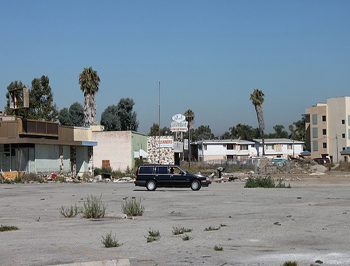
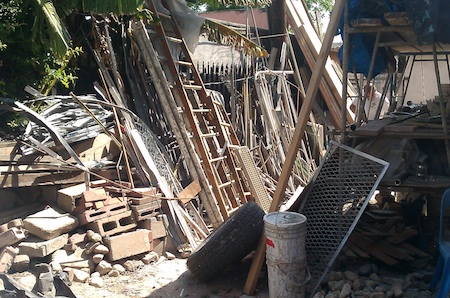
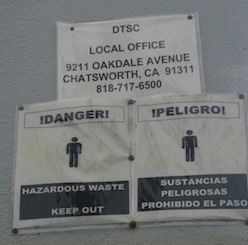
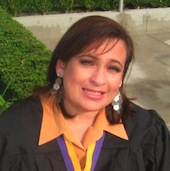 Martha Sánchez is a community activist and advocate, whose efforts led to the closure of Palace Plating, a toxic polluting plant just feet away from 28th Street Elementary.
Martha Sánchez is a community activist and advocate, whose efforts led to the closure of Palace Plating, a toxic polluting plant just feet away from 28th Street Elementary.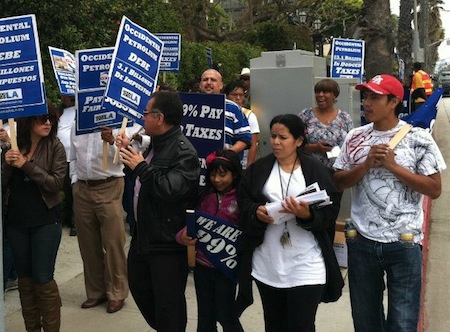 People from struggling South LA communities took the message of the 99% to Occidental Petroleum’s annual shareholder meeting on Friday. Shareholder activists confronted company executives and directors over Occidental Petroleum’s billions in dodged taxes. Afterwards, they joined supporters for a protest outside the meeting location.
People from struggling South LA communities took the message of the 99% to Occidental Petroleum’s annual shareholder meeting on Friday. Shareholder activists confronted company executives and directors over Occidental Petroleum’s billions in dodged taxes. Afterwards, they joined supporters for a protest outside the meeting location. 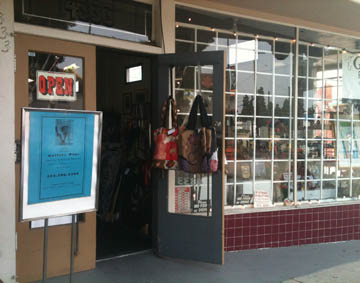 By Theresa Pablos
By Theresa Pablos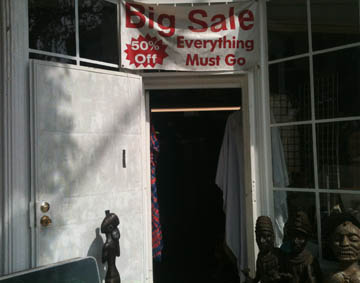 However, some storeowners think her marketing campaign has not drawn in enough new customers to keep stores open and flourishing.
However, some storeowners think her marketing campaign has not drawn in enough new customers to keep stores open and flourishing.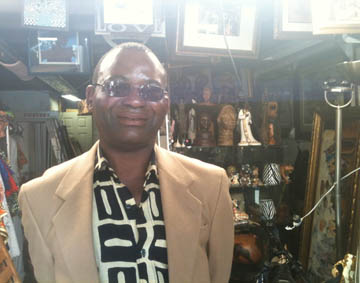 Bailey notices that more customers come in during special events like their buffet brunch and live jazz music every Sunday from 11 am to 4 pm. When customers come to Adassa’s Island Café for their highly rated Jamaican food, other businesses on the street also get customers.
Bailey notices that more customers come in during special events like their buffet brunch and live jazz music every Sunday from 11 am to 4 pm. When customers come to Adassa’s Island Café for their highly rated Jamaican food, other businesses on the street also get customers.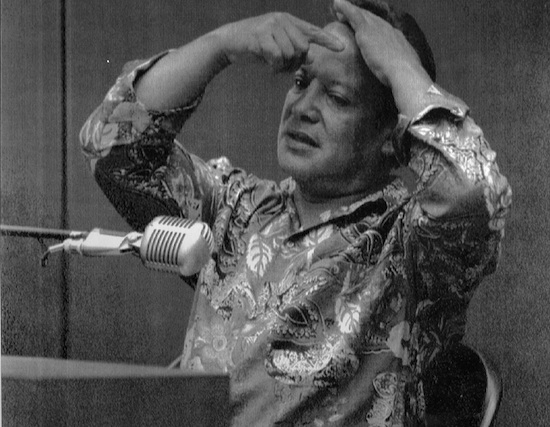 But there was a blaring omission in the coverage: the savage attack of Guatemalan immigrant Fidel López, who suffered a similar fate to that of Denny. On April 29, 1992, minutes after Denny was brutalized and rescued by four good Samaritans, the 48 year-old López was pulled from his truck, robbed and viciously assaulted in the very same intersection.
But there was a blaring omission in the coverage: the savage attack of Guatemalan immigrant Fidel López, who suffered a similar fate to that of Denny. On April 29, 1992, minutes after Denny was brutalized and rescued by four good Samaritans, the 48 year-old López was pulled from his truck, robbed and viciously assaulted in the very same intersection.




